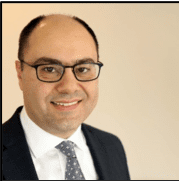For immediate release
October 3, 2018
Montreal, QC
Funding awarded to six research teams working to improve health outcomes and quality of life for people living with brain disorders
One in three Canadians – over 11 million people – will face a psychiatric disease, a neurological disorder or a brain or spinal cord injury at some point in their lives. The Government of Canada recognizes the significant impact of brain disorders on the health of Canadians, and supports research to advance our understanding of the brain.
Today, Brain Canada and Heath Canada are pleased to announce the results of the Improving Health Outcomes and Quality of Life Team Grant competition, funded through the Canada Brain Research Fund with the financial support of Health Canada and institutional sponsors. Launched in July 2017, the Improving Health Outcomes competition aims to accelerate the impact of research advances on health outcomes, including quality of life, of people living with brain disorders. This granting program enables unorthodox collaborations between multidisciplinary teams of researchers (including social sciences), clinicians, allied-health workers, carers and patients.
“Canada is home to some of the best neuroscientists in the world, and we are pleased to support their work through the Brain Canada Foundation,” said the Honourable Ginette Petitpas Taylor, Minister of Health. “This research will help Canadians living with brain disorders to live healthy and productive lives.”
“Since Brain Canada’s founding 20 years ago, our research program has focused on achieving outcomes that will benefit patients, families and caregivers,” said Inez Jabalpurwala, President and CEO of the Brain Canada Foundation. “We believe people must be at the center of all health research.”
Following a rigorous international peer review, six research teams across Canada were selected to receive funding, for a total of more than four million dollars. These projects cover several high priority research areas, including concussion, mental health, Alzheimer’s disease and stroke. A list of the principal investigators and a brief description of the research projects can be found here.
About Brain Canada
Brain Canada is a national non-profit organization headquartered in Montreal, that enables and supports excellent, innovative, paradigm-changing brain research in Canada. For two decades, Brain Canada has made the case for the brain as a single, complex system with commonalities across the range of neurological disorders, mental illnesses and addictions, brain and spinal cord injuries. Looking at the brain as one system has underscored the need for increased collaboration across disciplines and institutions, and led to smarter ways to invest in brain research that are focused on outcomes that will benefit patients and families. Brain Canada’s vision is to understand the brain, in health and illness, to improve lives and achieve societal impact.
The Canada Brain Research Fund is an innovative partnership between the Government of Canada (through Health Canada) and Brain Canada, designed to encourage Canadians to increase their support of brain research, and maximize the impact and efficiency of those investments. Brain Canada has raised $115 million from private donors and non-federal partners—now numbering more than 100—which Health Canada has matched with $120 million. By supporting our very best researchers and ideas, and nurturing the next generation in the field, we are keeping Canada at the forefront of the global quest to understand brain function and brain diseases.
To find out more, visit www.braincanada.ca
Media Contacts:
Émilie Rodgers, Brain Canada, emilie.rodgers@braincanada.ca, 514-989-2989
List of recipients

Jaynie Yang, University of Alberta (AB)
Amount: $537,000.00
Title: Parent-therapist partnership to provide early, intensive exercise to enhance walking outcome in children with perinatal stroke
Perinatal (around birth) stroke is devastating, because the effects are life-long. Current treatments to improve walking are limited, and largely passive, such as stretching, bracing, botulinum toxin injections and surgery. Recent work in animals indicates that intensive active therapy is effective in the young, when nerve pathways for movement are maturing, but not when the animals are older. Dr. Yang’s group has applied these principles in a laboratory-based study in young children with perinatal stroke, using play-based, intensive activity, 4 days/week over 12 weeks. The results have been very promising, showing that intensive therapy in young children is feasible and results in better mobility than current care.
Here, the group designed a study with parents, clinicians, managers, and researchers, to extend this treatment to the real-world. The treatment will be delivered by partnering parent(s) with frontline physical therapists. This partnership was not only considered more feasible by their parent collaborators, but importantly, more empowering. Three centres – Edmonton, Calgary and Ottawa – will be involved. All children will be followed until they turn 4 years old to determine if long-term outcomes are better than published outcomes for similar children. The quality of life for the child and their family will be measured, as will the cost-effectiveness of the treatment. If successful, the treatment will be translated broadly to other therapists and parents. The hope is to reverse the current passive approaches to an intensive, active approach, which could lead to benefits for the child and their family well beyond the study period.

Benjamin Goldstein, Sunnybrook Research Institute /University of Toronto (ON)
Amount: $779,000.00
Title: Toward exercise as medicine for adolescents with bipolar disorder
This project focuses on improving aerobic fitness (AF) among adolescents with bipolar disorder (BD). BD affects 2-5% of adolescents and is the 4th most disabling medical condition among adolescents worldwide. Even with treatment, adolescents with BD spend over half of the time with mood symptoms that impair quality of life. Adolescents with BD are also at higher risk for early cardiovascular disease compared to those without BD. Increasing AF can improve both short-term and long-term mental health, physical health, and quality of life. This study will be the first to examine how to engage adolescents with BD to increase their AF. In addition to scientists and clinician-scientists, the research team includes social workers, a mental health advocacy leader, an adolescent with BD, and a parent of an adolescent with BD. The team’s combination of expertise and experience will allow for a unique approach that would not be possible without integrating the perspectives of researchers, clinicians, and consumers.
The team will enroll 50 adolescents with BD in a 12-week behavior change counseling intervention, specifically focused on improving AF. Core intervention modules will include education about exercise, individualized in-person counseling on exercise beliefs and problem solving, and weekly phone counseling to enhance motivation, review exercise logs and diaries, and problem solve. Optional intervention modules will include coaching by a trained exercise professional, family focused counseling, and peer support. This patient-centered, flexible, personalized approach is intended to be feasible and effective across diverse settings and adolescents with BD. Despite the importance of the topic, there are no prior exercise intervention studies for adolescents with BD. The team believes that a project like this is needed to help the field progress.

Keith Yeates, Hotchkiss Brain Institute/University of Calgary (AB)
Amount: $429,000.00
Title: Implementation of a Clinical Pathway for Acute Care of Pediatric Concussion: Uptake, Outcomes, and Health Care Impacts
Each year, 1-2 million children in North America suffer a concussion. Guidelines exist to manage the care of concussion in children but have not been implemented consistently. As a result, clinical practice varies widely from one health provider to another. This may be because clinical guidelines have not been translated into “clinical pathways” (i.e., simple steps that health providers can easily follow). In November 2015, the Maternal Newborn Child Youth (MNCY) Strategic Clinical Network of Alberta Health Services (AHS) convened an expert work group to develop clinical pathways for pediatric concussion to help fill this gap.
The current proposal seeks to conduct a rigorous evaluation of the implementation and impact of a clinical pathway for acute care of pediatric concussion across four sites in Alberta. The project aims to design a robust implementation plan, evaluate its impact on patient outcomes, and determine whether it leads to a reduction of health care utilization and costs. The clinical pathway will be implemented at four sites in Alberta over 24 months. No published studies have rigorously evaluated the implementation a clinical pathway for pediatric concussion. Thus, the proposed project will break new ground in efforts to promote better outcomes for children with concussion and reduce the associated public health burden. The project is especially innovative in its use of technology as part of the clinical pathway. The website portal and text-based reminder system could help transform the care of children with concussion nationally.

Ian Graham, OHRI/University of Ottawa (ON)
Amount: $1,203,000.00
Title: Stroke Recovery in Motion
One in six people worldwide will experience a stroke in their lifetime. One third of these people are left permanently disabled. In 2013, at least 405,000 Canadians were living with long-term stroke disability and this number is projected to increase to 726,000 over the next 20 years. Advances in acute stroke treatment have increased survival but resulted in more people living with chronic disability and research emphasis has shifted from acute stroke to treatments to enhancing brain recovery. In the past 5 years, clinical trials have generated a wealth of new evidence-informed stroke recovery practices, but adoption has been slow and there continues to be a significant gap between best and current practice. For example, despite strong evidence that aerobic exercise improves motor recovery, quality of life and post-stroke cognitive function, most stroke survivors living in the community do not have access to quality exercise programs.
In 2016, the Heart and Stroke Foundation Canadian Partnership for Stroke Recovery (CPSR) convened its Knowledge Translation Advisory Committee to identify priority areas for knowledge translation. The committee, consisting of people living with stroke, caregivers, stroke recovery experts, health-care providers, policy-makers, and knowledge translation experts, identified exercise post-stroke as a high priority and specifically identified the need to develop sustainable evidence-based community-based exercise programs for those living with stroke.
This project therefore aims to scale-up the implementation of sustainable, evidence-based community exercise programs for those living with stroke and measure the impact of uptake. It will also use an integrated (participatory) knowledge translation approach to identify the factors that facilitate or hinder uptake of best practices to accelerate future scaling up.

Tarek Rajji, CAMH (ON)
Amount: $1,405,889.00
Title: Improving Quality of Life in the Elderly by Standardizing Care for Neuropsychiatric Symptoms of Dementia
Aggression and agitation are common symptoms among patients with dementia. These symptoms are the leading cause for hospitalization and admission to long-term care homes. Medication treatments that are commonly used to treat these symptoms have significant adverse effects including falls, stroke and increased risk of death. These adverse effects are more common with inappropriate use of these medications. To address this, a standardized approach, the Integrated Care Pathway (ICP), was developed to treat agitation and aggression in dementia. The ICP consists of a step by step treatment algorithm and predetermined assessments at each stage. The ICP was successfully implemented at the Geriatric Inpatient Unit at the Centre for Addiction and Mental Health (CAMH) and resulted in better outcomes with a lower use of medications and reduced rate of falls.
In this study, the team proposes to test this approach across Canada in other academic hospitals and long-term care homes. The group will enroll 220 participants with agitation/aggression due to dementia at 7 sites (4 inpatient units and 3 long term care homes) across Canada. Participants will be randomized to the ICP or treatment as usual. Data will be collected on clinical parameters such as agitation, falls, medication use, caregiver burden as well as about economic impact of care. Comparisons will be made between the ICP and usual care. If successful, this project will help guide clinical care to treat agitation/aggression in dementia and will improve the quality of life for patients with dementia and their caregivers. It will also help reduce health care costs and guide further research in this field.

Mari DeMarco, St. Paul’s Hospital/University of British Columbia (BC)
Amount: $684,000
Title: Translating research into practice: Investigating the impact of Alzheimer’s disease diagnostics in Canada
Alzheimer’s disease causes progressive neurological decline and substantially decreases the quality of life of the individuals with the disease and their caregivers. Today, there are over half a million Canadians living with Alzheimer’s disease or a related form of dementia, directly costing Canada $10.4 billion a year. With a rapidly aging population, both the number of Canadians with dementia and the associated costs are projected to double by 2031, representing an urgent and rapidly growing healthcare issue.
Early and accurate diagnosis of Alzheimer’s disease is critical because timely access to healthcare and community services has the potential to slow disease progression and improve quality of life. Current approaches for diagnosis rely on traditional imaging tests and observation of the signs and symptoms of the disease. Adding the measure of proteins found in cerebrospinal fluid (biomarkers) has been shown to help correctly identify the disease and predict those with mild symptoms that are likely to progress to dementia.
For this project, the team will develop a comprehensive understanding of how biomarkers for Alzheimer’s disease impact clinical decision making and healthcare costs. The group will develop an Alzheimer’s disease diagnostic tool and, with input from patients, their families, their doctors and other relevant stakeholders, address barriers to uptake and use in the Canadian healthcare system.